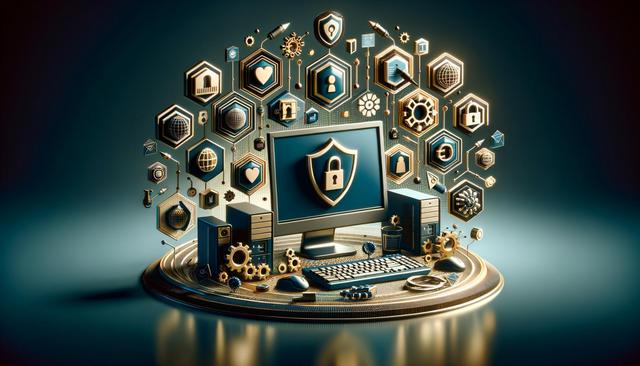
Smart and Secure: Essential Digital Safety Tips for Everyday Life
Understanding the Importance of Digital Safety
In an era where our personal and professional lives are increasingly digital, protecting your information online is more than just a precaution—it’s a necessity. Cyber threats such as identity theft, phishing, and data breaches can have long-term consequences. Digital safety involves practices and tools designed to safeguard your online presence, devices, and data. Understanding the risks is the first step in reducing your vulnerability. From securing your email to protecting your social media profiles, digital safety plays a crucial role in maintaining privacy and peace of mind.
It’s also important to recognize that threats evolve as technology advances. What worked a few years ago may no longer be sufficient. That’s why continuous education and adaptation are key. Whether you’re working remotely, shopping online, or simply browsing, every digital interaction presents a potential risk. Adopting proactive strategies can help mitigate these risks and protect your personal and financial information from cybercriminals.
Creating Strong Passwords and Managing Them Wisely
Your passwords are often the first line of defense against unauthorized access. Unfortunately, many individuals still use weak or reused passwords across multiple accounts, making them easy targets for attackers. A strong password should be:
- At least 12 characters long
- A mix of uppercase and lowercase letters, numbers, and symbols
- Unique to each account
To effectively manage multiple complex passwords, consider using a password manager. These tools store your credentials securely and can generate strong, random passwords for new accounts. They also reduce the temptation to reuse passwords, which is a common security flaw. Additionally, enabling two-factor authentication (2FA) adds another layer of protection by requiring a second form of identification, such as a text message or authentication app.
Changing your passwords regularly and avoiding obvious choices like birthdays or pet names can further enhance your security. Remember, the more effort you put into creating and maintaining secure passwords, the harder it becomes for cybercriminals to access your personal information.
Recognizing and Avoiding Phishing Scams
Phishing remains one of the most common and dangerous forms of cyberattack. These scams typically involve deceptive emails, messages, or websites that trick users into revealing sensitive information. Phishing messages often appear legitimate, mimicking trusted institutions such as banks or service providers. To avoid falling victim:
- Be cautious of unsolicited messages requesting personal or financial information
- Examine email addresses and links carefully—they may look authentic but contain slight misspellings
- Never click on suspicious links or download unknown attachments
Training yourself and your family to recognize these scams is essential. If you’re ever unsure about a message, contact the organization directly using official contact information. Many email services now include tools to flag phishing attempts automatically, but it’s still crucial to stay vigilant and trust your instincts. When in doubt, it’s always safer to delete a suspicious message than to risk exposure.
Protecting Your Devices and Software
Digital safety is not only about securing your data but also about maintaining the integrity of your devices. Smartphones, tablets, and computers are all vulnerable to malware, viruses, and other malicious software if not properly protected. To ensure your devices remain secure:
- Install reputable antivirus and anti-malware software
- Keep your operating system and apps updated regularly
- Use firewalls to block unauthorized access
- Avoid downloading software from unknown sources
Public Wi-Fi networks are another area of concern. While convenient, they often lack adequate security. When using public Wi-Fi, consider using a virtual private network (VPN) to encrypt your internet connection. This adds an extra layer of privacy and makes it more difficult for attackers to intercept your data.
Regularly backing up important data to a secure cloud storage service or external drive is another smart move. In the event of a cyberattack or device failure, having a backup ensures you don’t lose valuable information. These practices, though simple, can significantly reduce your exposure to digital threats.
Maintaining Privacy on Social Media and Online Platforms
Social media is a significant part of modern life, but it also presents unique challenges to digital safety. Oversharing personal details can give cybercriminals the information they need to guess passwords or answer security questions. To maintain privacy, it’s important to:
- Review and adjust privacy settings on all platforms
- Limit the amount of personal information shared publicly
- Be cautious when accepting friend or connection requests
It’s also wise to think before posting. Even seemingly harmless updates can reveal patterns about your behavior or location. Geotagging photos or checking in at certain places can inadvertently expose your whereabouts to the wrong people. Consider disabling location services for apps that don’t require them.
Another area of concern is third-party apps connected to your social media accounts. These can sometimes access more data than necessary. Periodically review and remove apps you no longer use. Practicing good digital hygiene on social platforms helps ensure that your online interactions remain enjoyable and secure.
Conclusion: Staying Safe in a Digital World
Digital safety is an ongoing process that requires awareness, diligence, and proactive habits. By strengthening passwords, staying alert to scams, protecting devices, and being mindful of online behavior, you can significantly reduce your risk of cyber threats. Whether you’re a student, professional, parent, or retiree, these safety tips are relevant to everyone navigating the digital world today. Staying informed and cautious helps create a safer internet for yourself and those around you.